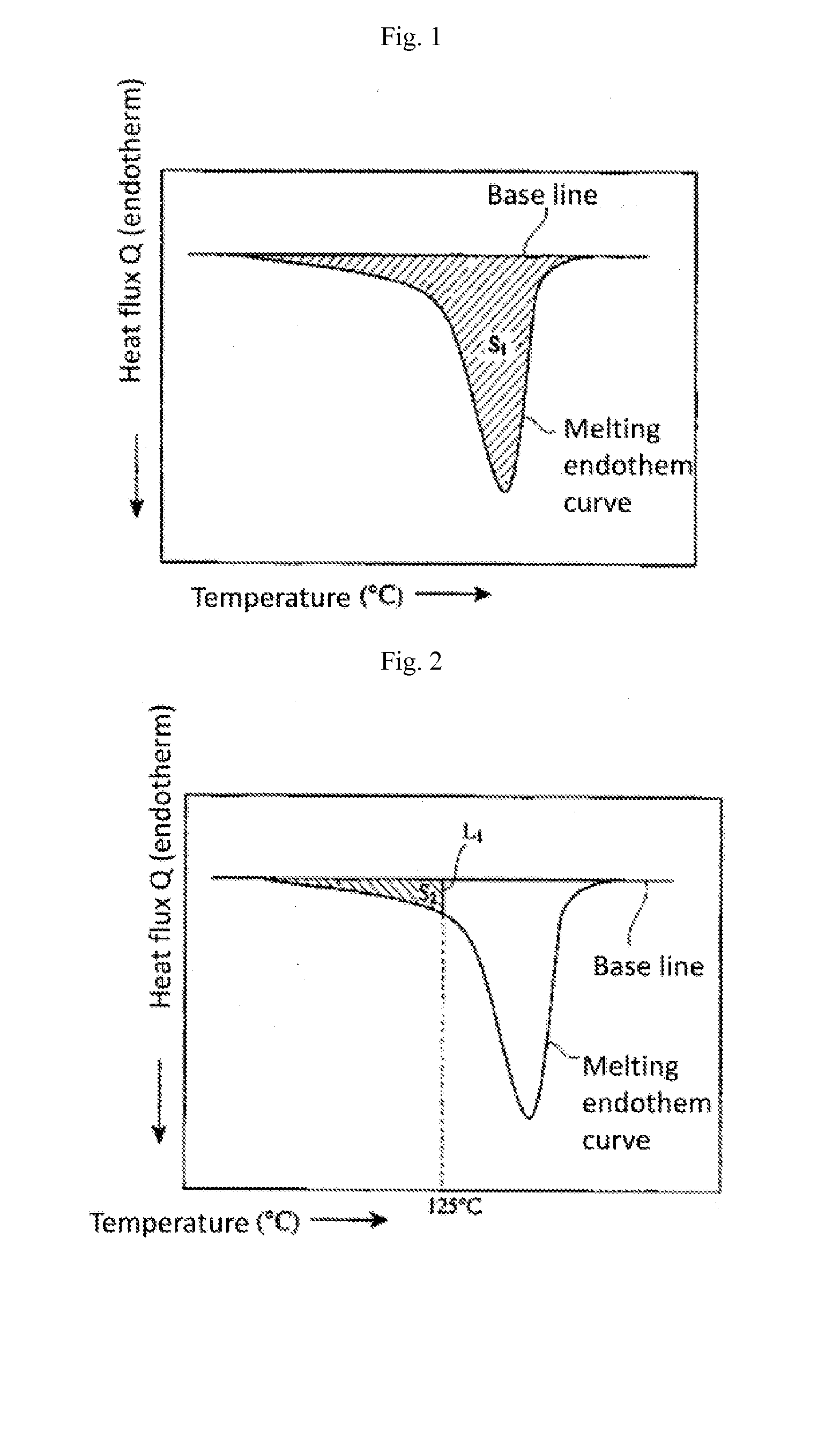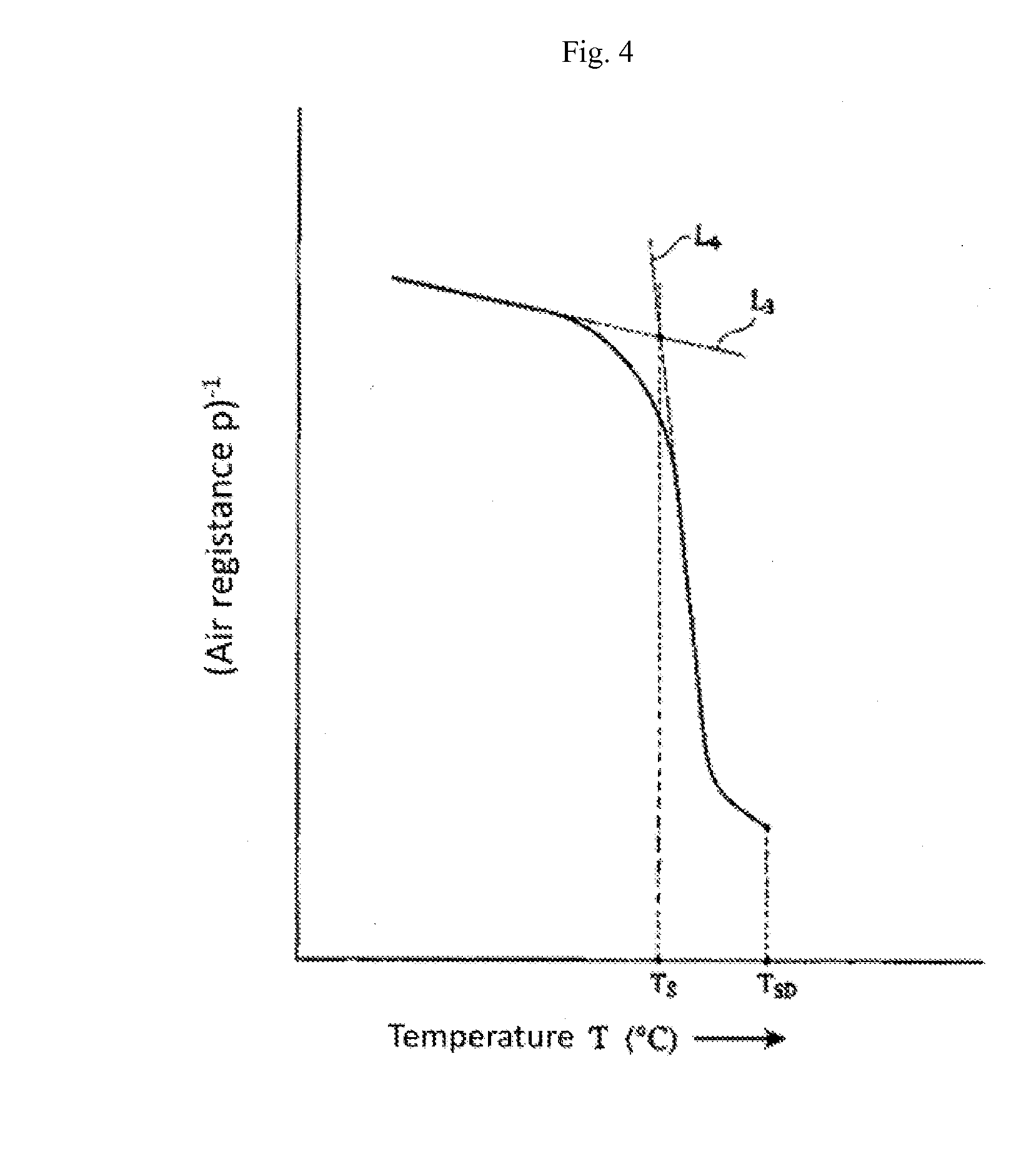Battery separator
a battery separator and separator technology, applied in the field of battery separators, can solve the problems of increasing the runaway reaction, unable to avoid the decrease in shutdown properties, and the microporous membrane described in patent documents 1 to 3 does not have a sufficient shape keeping property, etc., to achieve excellent heat shrinkage resistance, high physical stability, and high air resistance change rate
- Summary
- Abstract
- Description
- Claims
- Application Information
AI Technical Summary
Benefits of technology
Problems solved by technology
Method used
Image
Examples
example 1
[0142]One hundred parts by mass a polyethylene (PE) composition composed of 30% by mass of ultra-high molecular weight polyethylene (UHMWPE) with a mass average molecular weight (Mw) of 2.5×106 and 70% by mass of high density polyethylene (HDPE) with a Mw of 3.0×105 was dry-blended with 0.375 parts by mass of tetrakis[methylene-3-(3,5-ditertiary butyl-4-hydroxyphenyl)-propionate]methane. The PE composition composed of UHMWPE and HDPE showed a ΔHm (≦125° C.) of 14%, a T (50%) of 132.5° C., a melting point of 135° C., and a crystal dispersion temperature of 100° C.
[0143]The Mws of UHMWPE and HDPE were determined by gel permeation chromatography (GPC) under the following conditions (the same shall apply hereinafter).
[0144]Measuring apparatus: GPC-150C available from Waters Corporation
[0145]Column: Shodex UT806M available from SHOWA DENKO K.K.
[0146]Column temperature: 135° C.
[0147]Solvent (mobile phase): o-dichlorbenzene
[0148]Solvent flow rate: 1.0 mL / min
[0149]Sample concentration: 0.1%...
example 2
[0158]In the production of a microporous polyethylene membrane in Example 1, while keeping the ratio of a feed rate of a polyethylene composition to a screw rotation speed Ns (Q / Ns) at 0.3 kg / h / rpm, the feed rate of a polyethylene composition and the screw rotation speed were adjusted to produce a microporous polyethylene membrane (b) having a thickness of 9 μm and an air resistance of 70 sec / 100 cc Air.
[0159]Next, a modifying porous layer was laminated on one surface of the microporous polyethylene membrane (b) in the same manner as in Example 1 to obtain a battery separator with a final thickness of 11 μm.
example 3
[0160]A battery separator with a final thickness of 24 μm was obtained in the same manner as in Example 1 except that modifying porous layers of same thickness were laminated on both surfaces of the microporous polyethylene membrane (a) obtained in Example 1.
PUM
| Property | Measurement | Unit |
|---|---|---|
| temperature | aaaaa | aaaaa |
| temperature | aaaaa | aaaaa |
| temperature | aaaaa | aaaaa |
Abstract
Description
Claims
Application Information
 Login to View More
Login to View More - R&D
- Intellectual Property
- Life Sciences
- Materials
- Tech Scout
- Unparalleled Data Quality
- Higher Quality Content
- 60% Fewer Hallucinations
Browse by: Latest US Patents, China's latest patents, Technical Efficacy Thesaurus, Application Domain, Technology Topic, Popular Technical Reports.
© 2025 PatSnap. All rights reserved.Legal|Privacy policy|Modern Slavery Act Transparency Statement|Sitemap|About US| Contact US: help@patsnap.com



